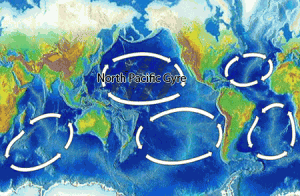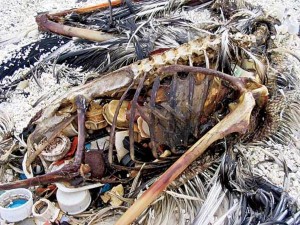Just one day after moving back home to Victoria from UBC my mom told me about the shocking news about this massive clump of garbage that is floating in the North Pacific Ocean….and has been over over 15 years! Why most people are finding out about it now gets me. A man sailing across the ocean discovered this horrific scene and estimated the garbage mass is twice the size of Texas!
The Great Pacific Garbage Patch, also described as the Pacific Trash Vortex, is a gyre of marine litter. Although many scientists suggest that the patch extends over
 a very wide area, with estimates ranging from an area the size of the state of Texas to one larger than the continental United States, the exact size is unknown. The size is determined by a higher-than normal degree of concentration of pelagic debris in the water. Recent data collected from Pacific albatrosspopulations suggest there may be two distinct zones of concentrated debris in the Pacific (Wikipedia, 2010).
a very wide area, with estimates ranging from an area the size of the state of Texas to one larger than the continental United States, the exact size is unknown. The size is determined by a higher-than normal degree of concentration of pelagic debris in the water. Recent data collected from Pacific albatrosspopulations suggest there may be two distinct zones of concentrated debris in the Pacific (Wikipedia, 2010).
The Patch is characterized by exceptionally high concentrations of pelagicplastics, chemical sludge, and other debris that have been trapped by the currents of the North Pacific Gyre. Despite its size and density, the patch is not visible from satellite photography since it primarily consists of suspended particulates in the upper water column. Since plastics break down to ever smaller polymers, concentrations of submerged particles are not visible from space, nor do they appear as a continuous debris field. Instead, the patch is defined as an area in which the mass of plastic debris in the upper water column is significantly higher than average (Wikipedia, 2010).
Unfortunately this dilemma has a huge impact on wildlife. Some of these long-lasting plastics end up in the stomachs of marine birds and animals, and their young, including sea turtles, and the Black-footed Albatross.Besides the particles’ danger to wildlife, the floating debris can absorb organic pollutants from seawater, including PCBs, DDT, andPAHs. Aside from toxic effects, when ingested, some of these are mistaken by the endocrinesystem as estradiol, causing hormone disruption in the affected animal. These toxin-containing plastic pieces are also eaten by jellyfish, which are then eaten by larger fish. Many of these fish are then consumed by humans, resulting in their ingestion of toxic chemicals. Marine plastics also facilitate the spread of invasive species that attach to floating plastic in one region and drift long distances to colonize other ecosystems. Research has shown that this plastic marine debris affects at least 267 species worldwide and a few of the 267 species reside in the North Pacific Gyre (Wikipedia, 2010).
This is a fine example of what happens to accumulated plastic waste. Let’s be more mindful when choosing and using plastics for whatever reason. After all, we could be the next ones after the fish consuming the plastic.

